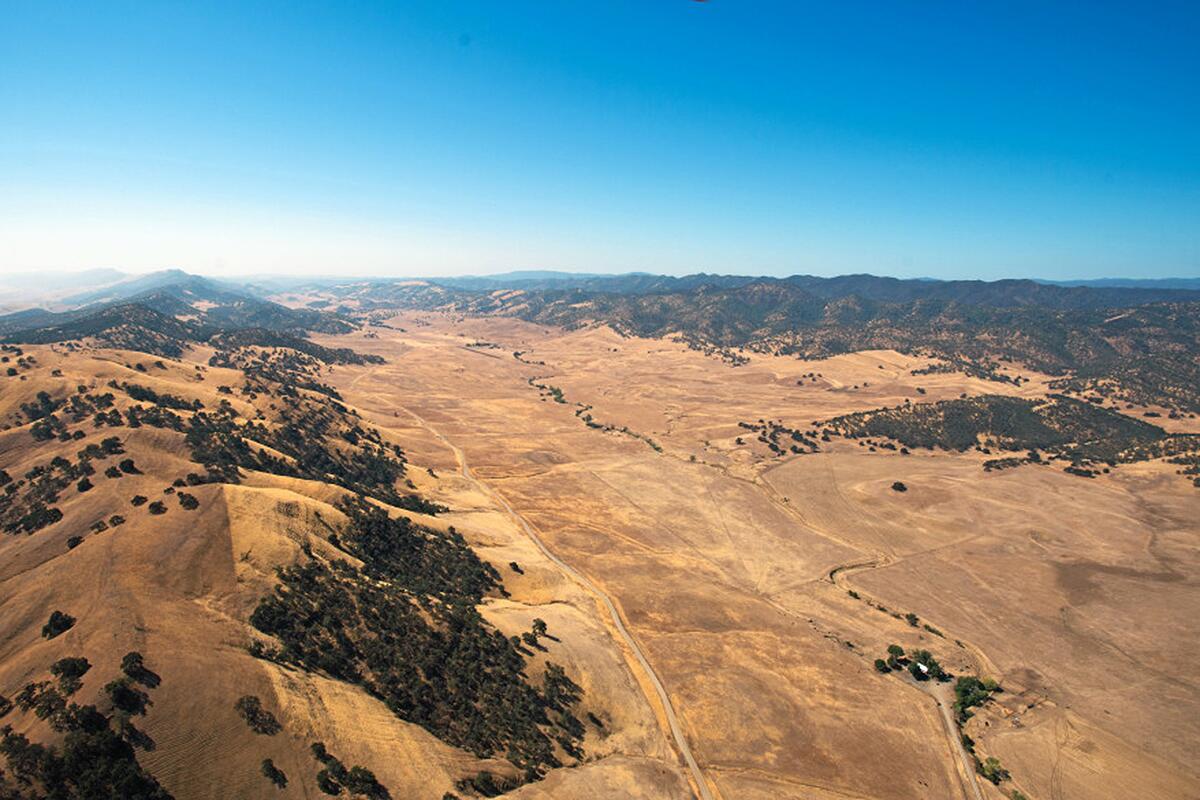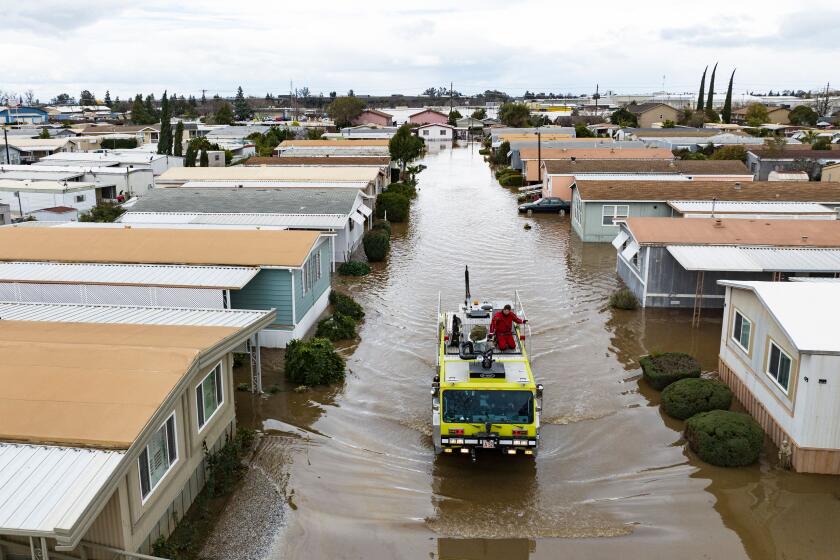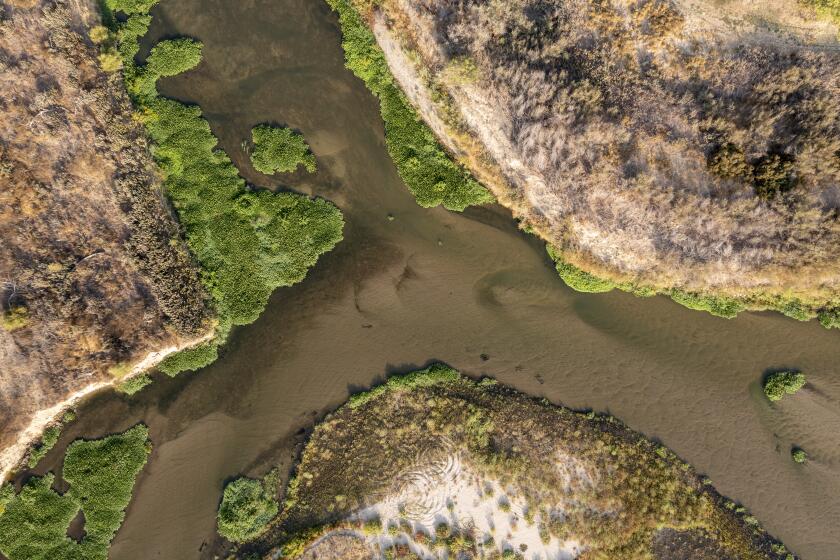Have no Prop. 1 water projects been built in California? No, but they are moving slowly

SACRAMENTO — California voters approved a ballyhooed $7.5-billion bond issue eight-plus years ago thinking the state would build dams and other vital water facilities. But it hasn’t built zilch. True or false?
That’s the rap: The voters were taken. The state can’t get its act together.
Republicans and agriculture interests in particular make that charge, but the complaint also is widespread throughout the state.
There’s some truth in the allegation. But it’s basically a bum rap.
No dams have been built, that’s true. But one will be and two will be expanded. And hundreds of other smaller projects have been completed.
It is true that government bureaucracies at all levels move at a glacial pace. I’ve always thought that’s because agency heads are too skittish politically. They’re pressured by their elected bosses not to make them look bad. So, they creep along cautiously.
Also, there’s no profit motive to spur swift government action, unlike in the private sector. But the private sector isn’t always a great example of competence either. Southwest Airlines demonstrated that over the holidays and Pacific Gas & Electric Co. constantly screws up in accidentally igniting wildfires.
Republicans last week blasted Democrats for alleged inaction on the 2014 bond act, Proposition 1, which passed by a lopsided 2-1 vote. Hardly anyone pays attention to Republicans anymore in Sacramento, but they made some good points this time while being off base on their basic premise.
California has added little to its once-prized water system since 1960, and the population has more than doubled, columnist George Skelton writes.
Let’s back up for some perspective.
The $7.5-billion bond was a scaled-down compromise of an earlier $11.1-billion borrowing scheme that was so larded with putrid pork that legislators twice pulled it from the ballot, fearful voters would gag.
Then-Gov. Jerry Brown negotiated with legislative leaders to create the leaner and more digestible Proposition 1.
“Look at these swollen rivers,” Assembly Republican leader James Gallagher of Yuba City told me after he and GOP colleagues held a news conference near the rampaging American River in Sacramento last week. “All these waters should be captured.”
At the news conference, Gallagher contended that “the Democratic supermajority and the governor have failed to make investments in water infrastructure.”
Maybe not as much as Gallagher and the GOP would like, but the state has spent billions and intends to keep spending on water projects.
Gov. Newsom declared a statewide drought emergency on Tuesday, which will help the state expedite drought relief projects, columnist George Skelton writes.
Gallagher later told me, however, “money is not the problem” for Proposition 1’s main dam project, Sites, a proposed off-stream reservoir in Colusa County. It would hold 1.5 million acre-feet of water pumped from the nearby Sacramento River.
“It’s been studied since Eisenhower [was president] and is stuck in permitting,” the GOP leader said. “It’s taking forever. Decades and decades. It’s a bureaucratic morass.”
Gov. Gavin Newsom apparently doesn’t disagree. Last fall, he created “strike teams” to help cut through bureaucratic red tape on Proposition 1 projects.
Sites Project Director Jerry Brown — no relation to the former governor, who lives nearby on his family’s ancestral ranch — seems satisfied with the project’s progress.
“We’re rolling along,” he told me. “By the end of 2024, we should be all squared away and able to initiate construction in 2025. That will take six or seven years.”
On Wednesday, Brown estimated that if Sites were now operating, it could capture 382,000 acre-feet of stormwater through mid-February.
He estimates the reservoir’s total cost at $4.5 billion — a bit higher than the $3.9 billion listed on a state website. The state has committed $875 million in Proposition 1 money to the project.
The rest will be paid primarily by water users, mainly farm growers. The Metropolitan Water District of Southern California plans to buy 20% of the water. The feds also are kicking in money.
Financing water storage facilities gets complicated.
Under Proposition 1, $2.7 billion is earmarked for storage — above and below ground. But the state money can be used only for “public benefits” such as salmon protection, recreation and flood control. Water users — farmers, homeowners, businesses — pay the rest with higher monthly bills.
Six other storage projects also have qualified for Proposition 1 funds.
There are two dam expansions: Los Vaqueros in Contra Costa County and Pacheco in Santa Clara County. State bond money will pay for $478 million of Los Vaqueros’ nearly $800-million cost. The Pacheco project will get $504 million toward its $2.5-billion tab.
Four groundwater projects also have been approved for Proposition 1 money: in Sacramento ($292 million) and Kern ($89 million) counties, along with the Antelope Valley ($128 million) and Chino Basin ($215 million).
These decisions were left up to the state Water Commission so they wouldn’t become chips in legislative political bargaining.
Proposition 1 was designed for multi-agency involvement, guaranteeing bureaucratic bottlenecks. The water storage projects are all led by local agencies, not the state. Sacramento is contributing money and, with the feds, signing off — gradually — on permits.
“It’s slow going — a lot of permitting,” says Lisa Lien-Mager, spokesperson for the state Natural Resources Agency. “It’s not like the state just writes a check.”
The rest of the Proposition 1 money is for myriad projects such as wastewater management, stormwater capture, recycling and groundwater cleanup.
Of the total bond money, $6.4 billion has been committed to projects and more than $2 billion has been spent, says Nancy Vogel, the Natural Resources Agency’s deputy secretary for water. In all, 1,838 projects have been funded and 760 are completed.
So, it’s false that zilch has been built. But it’s true that many projects are progressing too slowly, even by government standards.
More to Read
Sign up for Essential California
The most important California stories and recommendations in your inbox every morning.
You may occasionally receive promotional content from the Los Angeles Times.













